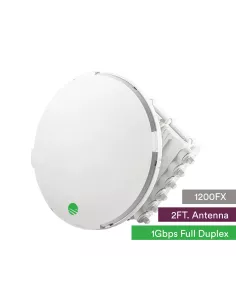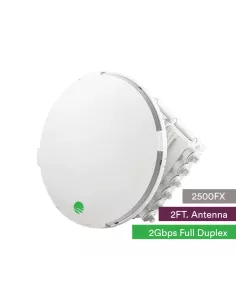mmWave – the backbone of capacity!
- Macayla Allnutt
- Latest News
- 24 likes
- 1713 views
- 0 comments
Wireless technology development are keeping pace with the data demands brought on by more connected users and bandwidth-hungry applications.
mmWave technology may not be brand new, but with the latest developments, offering Gigabit+ connectivity reliably, it is quickly becoming the go-to solution for service providers looking for backhaul connectivity.
Whether using mmWave applications for Last-Mile backhaul, Wi-Fi backhaul, temporary high capacity, or simply as a fibre redundancy, mmWave offers service providers and integrators a cost-effective, easy to deploy, stable solution no matter the application.
In essence, what is mmWave and how does this differ from conventional wireless frequencies? mmWave means that the operating frequency is so high that the wavelength is measured in millimeters (mm) instead of centimeters (cm) or meters (m).
One drawback of high frequency, due to the shorter wavelength, is the distance limitation when compared to conventional lower frequency wireless technologies. From the 60GHz frequency that is limited to sub 1km link distances due to a phenomenon known as oxygen absorption, to the E-band or 80GHz frequency offering sub 15km link distances, with susceptibility to rain fade.
However, with proper link planning, alignment and even 5GHz failover on products like Siklu’s 8010, service providers can offer high capacity, carrier-grade performance in backhaul wireless links. As a service provider or integrator, you can offer Service Level Agreements based on the high availability of these products, from 99,9% to 99,999% annual uptime.
With the latest price point on Siklu’s range of mmWave products, there has never been a better time to invest in future-proofing network capacity or redundancy, than now! Contact a MiRO specialist today for more information, alternatively click here to view the product offering and order your solution directly from miro.co.za







Comments
View Comments